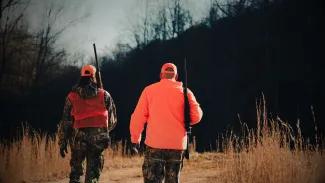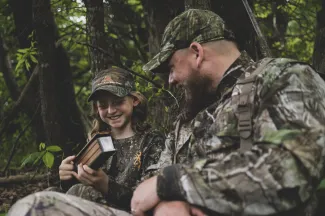Controlled hunts occur on public land and for a limited number of people. And so, they often offer a unique and rewarding hunting experience. If you’re interested in applying for one of these unique hunts and don’t know where to start, we are here to help.
What are Controlled Hunts?
- Controlled hunts are held in areas where unrestricted public hunting would pose safety concerns or where overharvest might occur.
- Hunters must apply and then be selected through a random drawing.
- Every year you apply and aren’t selected, you earn a preference point in that category. So, your odds of being drawn improve the next year.
- There are seven categories: elk, antelope, deer, deer hunts for non-ambulatory permittees, youth deer hunts, turkey and youth turkey.
- Some hunts allow for groups hunts, while others are only open to individuals.
- Before you apply, view our step-by-step guide.
Group Hunts

In some categories, hunters may apply in groups of up to four people. This is a great choice for couples, friends, and family groups (minimum age of 14).
The categories below offer both individual and group hunts:
- Category 1 (Elk hunts): Some elk hunt choices allow for up to two hunters.
- Category 3 (Deer hunts): Up to four (4) hunters may apply together for most hunts.
- Category 4 (Deer hunts for motor vehicle or non-ambulatory permittees): Up to four (4) hunters may apply together.
- Category 6 (Spring turkey hunts): Up to two (2) hunters may apply together, except McAlester AAP hunters must apply in pairs and Deep Fork applicants must apply alone.
Elk and Pronghorn Hunts
Elk and pronghorn hunts are highly sought after. These are once-in-a-lifetime hunts, meaning once you’re drawn, you can never be drawn again. Except for the “walk-in only” elk hunts, these hunts do not allow group applications.
What are walk-in elk hunts?
Walk-in hunts were implemented in 2020 as a means to increase elk harvest and allow additional opportunity on the Wichita Mountains National Wildlife Refuge. Hunters are allowed to take a non-hunting partner with them while in the field. The non-hunting partner may assist with spotting, hunting, gear packing and elk retrieval following successful harvest. Hunting teams must enter and exit the hunt area daily. No overnight camping is allowed within the hunt area. Hunts begin immediately following orientation on Monday and end at noon Friday of the hunt week. All mandatory safety procedures and recommended supplies are the same as traditional hunts. Center fire rifle .270 or larger is the legal means of take.
Youth Hunts

Youth hunts are available for people 15 years of age and younger. If drawn, the hunters must be accompanied by an adult non-hunting partner 21 years old or older who possesses a certificate of hunter education or is exempt from either hunter education requirements or license requirements.
When and Where do Controlled Hunts Occur?
Controlled hunts are held in areas where unrestricted public hunting would pose safety concerns or where overharvest might occur. The deer category, for example, offers around 80 different hunts on 30 different areas (mostly Wildlife Management Areas). Some hunts occur as early as October while other may be as late as December. And so there is surely a hunt (or two!) that works with your schedule.
Before you apply, you can view hunt information like when, where, how many hunters and method of take here. Or, when you apply at GoOutdoorOklahoma.com